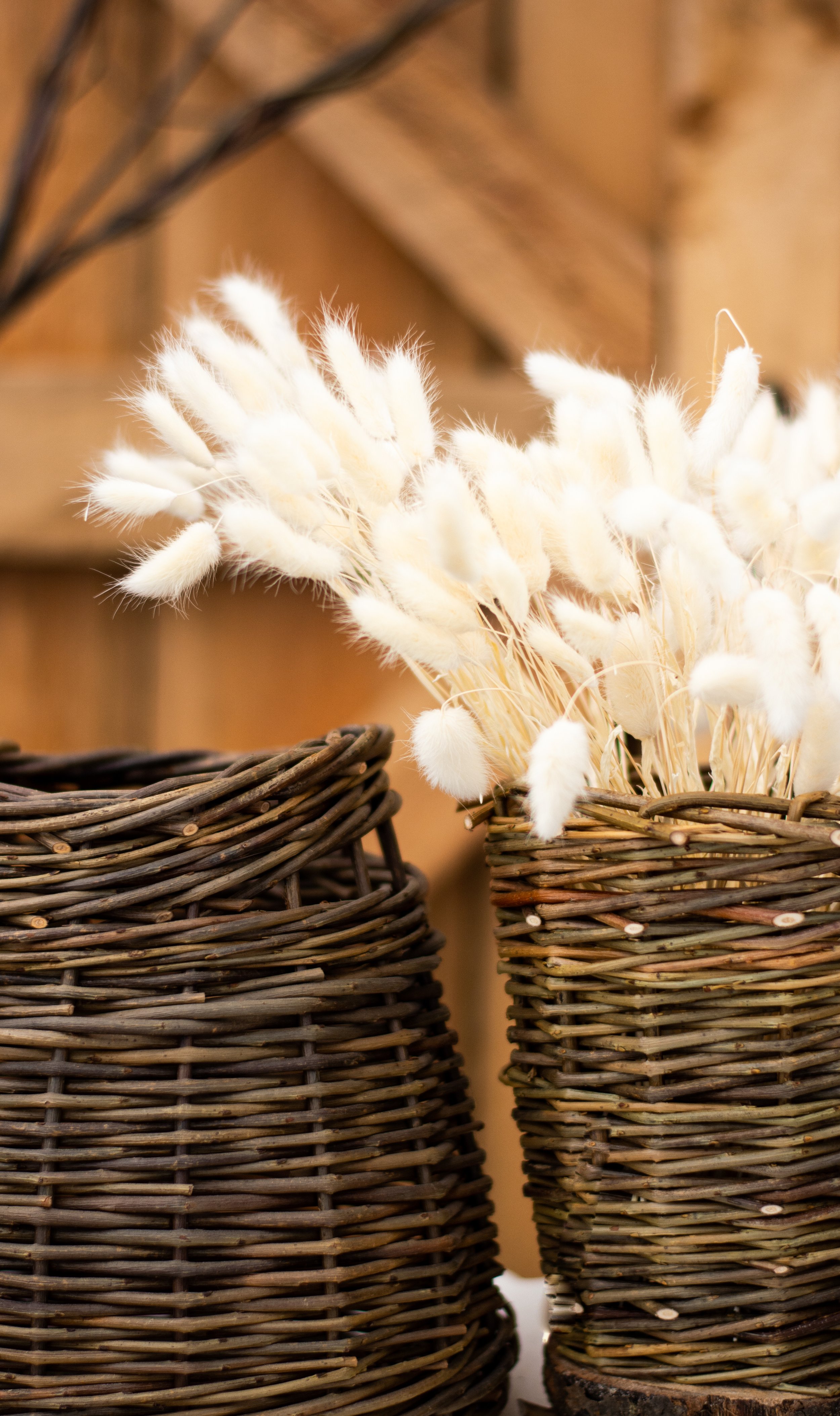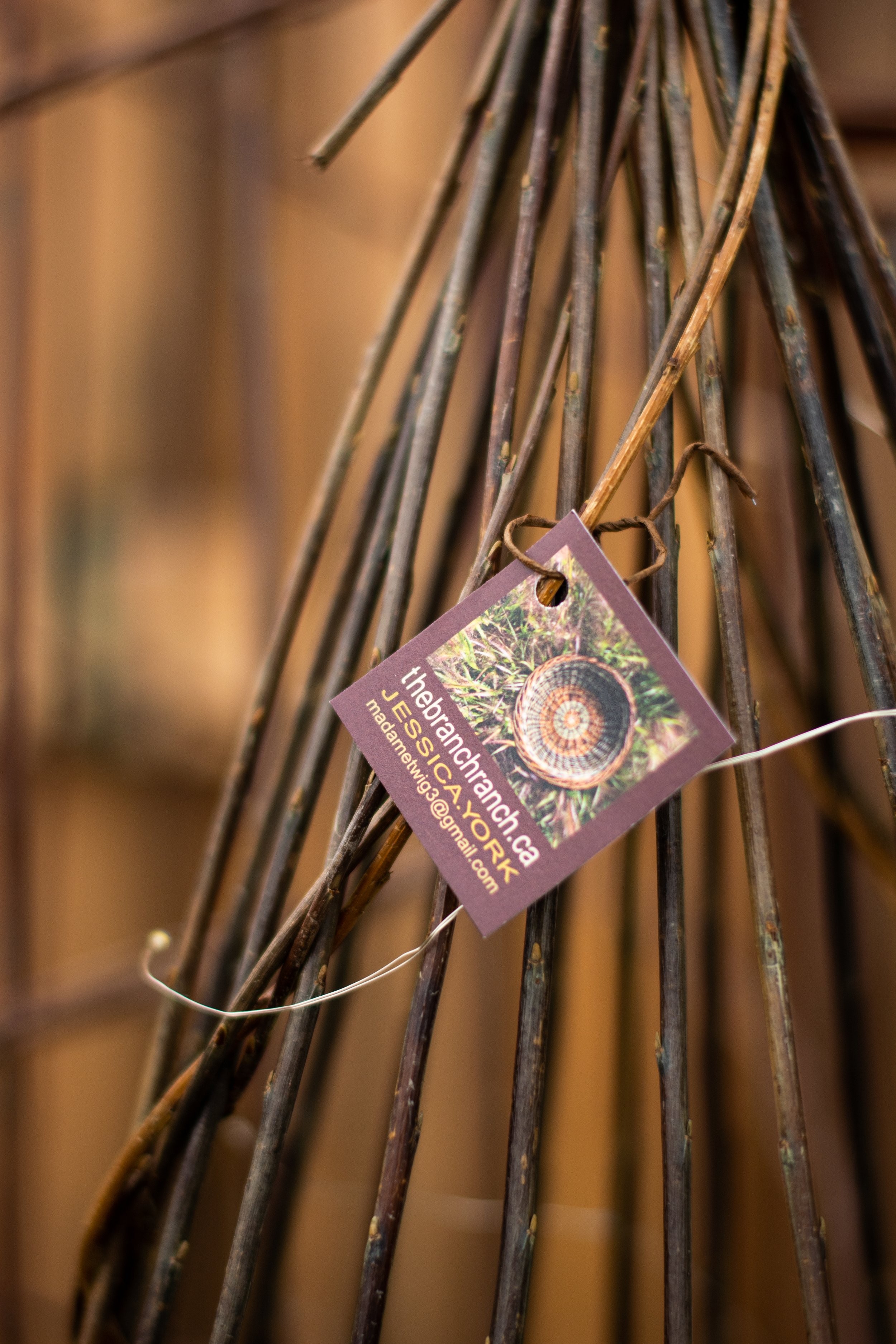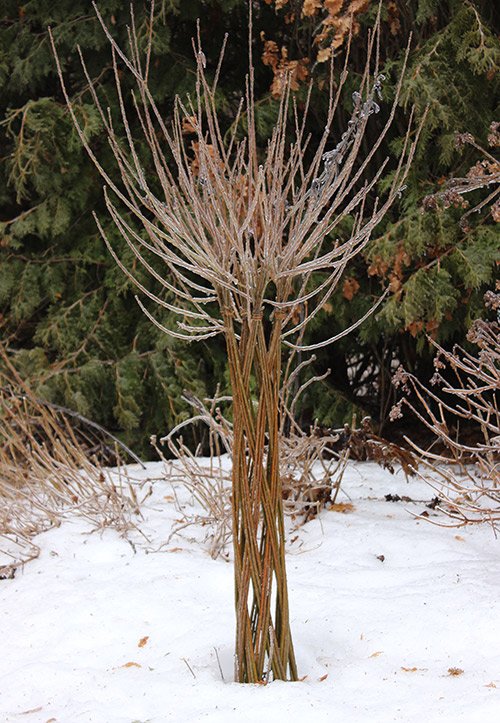CARING FOR WILLOW
YOUR LIVING WILLOW
Willow is a versatile, flexible and fast growing plant, making it ideal for use in constructing structures for shade, shelter, play and privacy. Living willow projects grow quickly, budding out delicate, green leaves within one month of planting. A living fence, or fedge, will provide privacy screening in the first year and is a sustainable alternative to many other types of fencing. Domes, tunnels, mazes and arbours are great fun and easy to build. With a little bit of maintenance they will last indefinitely, growing into magnificent, unique features in a garden or school yard.
In Ontario the best time to plant is while the willow is dormant, in early spring just after the ground thaws. The leafless rods are inserted into the ground in a pattern to encourage upwards and sideways growth, and tied to help with natural grafting. It is important to keep the area weed free so that the willow has a chance to take hold without competition, it is recommended that a weed barrier and mulch be installed at the time of planting. Once planted, willow requires regular watering, the equivalent of one inch of rain per week, throughout the first growing season and during periods of drought. It is best to water deeply once per week, because frequent shallow watering does not encourage deep root growth which is essential for most healthy plants. A soaker hose installed along the entire length of the planting is the best was to water correctly. Watering from a hand held hose is not recommended.
Willow grows best in conditions with at least one half day sun. It will adapt well to most soils but you may want to avoid extremely sandy or constantly wet conditions, also planting away from foundations and septic systems is advisable.
Structures requiring height may be planted and trained for a year or two before they are tall enough to be enclosed. Some pruning or weaving is required to maintain the shape of most projects but this can be an enjoyable exercise, especially for children. Structures may be pruned several times during the growing season to maintain an orderly appearance, or allowed to grow long and wild, then pruned and woven before new growth appears in the spring.
There are hundreds willow or 'Salix' species of trees and shrubs and many hybrids, growing from 6cm to 20m in height. We grow approximately 30 varieties best suited to basketry and living willow projects. Willow is a wonderful material to work with, extremely strong but very flexible, it can be used either fresh (for living willow) or dried and rehydrated (for basketry).
SOME OF OUR BASKETRY WILLOW VARIETIES CAN BE GROWN AS BEAUTIFUL ORNAMENTALS, WITH INTERESTING COLOUR FOR HEDGING, PRIVACY SCREENING OR WINDBREAKS. THESE CAN BE STARTED FROM RODS OR CUTTINGS.
YOUR WOVEN WILLOW GARDEN ORNAMENT OR BIRD FEEDER
To preserve your outdoor willow project we recommend a 50/50 solution of boiled linseed oil and turpentine brushed or sprayed on the willow once it has dried. It may be reapplied once or twice a year, just make sure you bring it in and dry it out before you reapply.
Click the button below to learn how to SOAK WILLOW for weaving.





